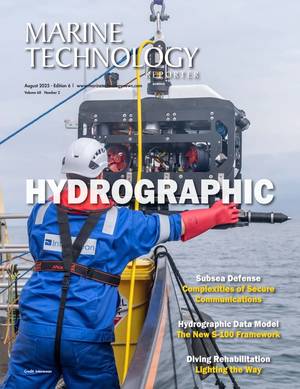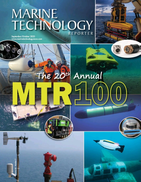Remotely Operated Vehicles
These remotely operated vehicles are also known as ROVs and they are a subcategory of undersea vehicles, robots that can operate under water for diverse purposes. There is no need for a human occupant, since the ROV can do the job itself, being controlled by a person aboard a vessel, sitting in a remote control room, through a tether. The tether is also called umbilical cable – it is a group of wires that transmit the visual and audio information to and from the human operator. ROVs are equipped with additional technology, such as sonars, video cameras, manipulators (cutting arms), magnetometers and instruments that measure depth, light penetration, water clarity and water temperature and they can reach areas that are too dangerous for people.
The first ROVs were used by the Royal Navy back in the 50’s, in order to recover lost torpedoes and mines that had not surfaced. All the further research on these undersea vehicles was funded by the Navy and its purpose was to develop more performing "Cable-Controlled Underwater Recovery Vehicles" for retrieval of objects from the ocean floor, including nuclear bombs.
Using this technology, the oil and gas industry has begun studies on their own, improving the ROVs capabilities, design and functions and adjusting them to serve their commercial purposes. In the 80’s, when the offshore development increased, the ROVs became extremely useful, thus utilized on a larger scale. The decrease in the price of oil led to a hamper of ROV research in the mid ‘80’s, which was resumed soon after. Ever since, the technological advances influenced the producing of ROVs and extended their utilization in other fields as well, such as education and science.
However, regardless of these technological improvements, there is still a lot to invest in the development of ROVs. Many of them require improvements regarding their power supply and recharging, since larger ROVs utilize more power, thus they cannot spend a longer time undersea. Smaller ROVs have limited applications, but some of them can stay underwater for weeks.
Types and applications of Remotely Operated Vehicles
Remotely operated vehicles for underwater use are extremely common in offshore oil and gas extraction industries and scientific research, but any marine field can find a purpose for these robots. As part of the scientific inquiries, ROVs are used in oceanic topography and cartography, marine biology – to study the habitat and types of marine life, by private and public institutes such as the University of Rhode Island / Institute for Exploration (URI/IFE), the Woods Hole Oceanographic Institution (WHOI) or the Monterey Bay Aquarium Research Institute (MBARI). One of the most expensive remotely operated vehicles is MBARI's Tiburon which cost over $6,000,000 to develop. nbsp;nbsp;nbsp;nbsp;nbsp;nbsp;
Since 2008, the US Navy have replaced their rescue teams and systems with the modular ROV system, known as pressurized rescue module (PRM). They have been considering this solution for many years, but only then the technological advance allowed them to use this system as safe rescue solutions. US Navy also uses a special type of ROV, the AN/SLQ-48 Mine Neutralisation Vehicle (MNV), to detect and neutralize undersea mines, using the EOD detonation, through acoustic signals sent from the ship. The unmanned vehicle can go as deep as 2000 meters and 1000 yards away from the main vessel.
Observation ROVs are used for visual inspection only, due to their reduced size, and can only carry payloads up to 20-40 kilograms. They feature technical equipment such as sensors, video cameras and indicators, in order to locate the area of interest and record any specific details the operator is interested in. These vehicles are perfect for routine and maintenance checks and also provide additional visual support for undersea activities. These remotely operated vehicles can also be used in search missions, wreck survey, diving assistance, scientific and multi-beam survey, tunnel inspections, aquaculture, underhull survey and port security.
Drill Support ROVs are usually large undersea vehicles, provided with hydraulic tools and manipulators, as well as with sophisticated electronic technology. They can operate underwater for long periods of time, without having to resurface for recharging. They were developed mainly to replace the deep-sea divers, whose work undersea was extremely dangerous due to hazardous underwater conditions, yet necessary. In addition, some of them are more mobile and much faster, thus more efficient, than a human diver.
Construction support ROVs are also large remotely operated vehicles, which use a power of 150HP. Some of them can go as deep as 3000 meters and can operate in hazardous conditions, at a maximum speed of 3.0 knots and with a maximum load of up to 1 ton. They feature cameras, grabbers, manipulators and a full surveillance package.
Pipeline Survey ROVs offer accurate pipeline survey reports and successfully replace the classical hydraulic work vehicles used for this purpose until recently. These remotely operated vehicles feature hydraulic camera, that provide high quality video images of the inspected areas, sound velocity probes, depth sensors and velocity logs. They also have detachable wheeled skids or are able to operate free-swimming, because of their auto altitude features.
Pipeline Trenchers and Plows are mainly used in construction and other utility services. They are powerful, large ROVs, used to dig underwater ditches and trenches for pipeline construction, in order to protect these constructions from the destructive action of water currents.
Towed Vehicles are mainly used in oceanographic research and measurements. They can either be linked to the end of the tow cable or slide along it and they feature hydrodynamic depressors, conductivity, salinity and depth sensors, inductive coupling data communication systems and other technological equipments. Many of them are small vehicles, less than 1 meter long, and they are highly maneuverable and of light weight.
Special Projects, ROVs, Work Packages and Remotely Controlled Seabed Equipment are large remotely operated vehicles, which can reach 250 kilograms or even more. They feature TV cameras, lights, manipulator arms, an assortment of tools and sensors and extremely long umbilical cables.












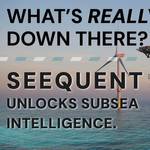
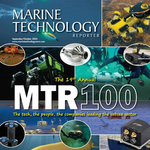

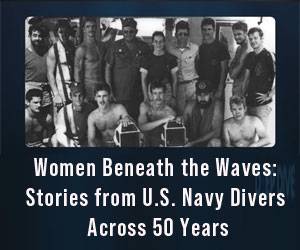
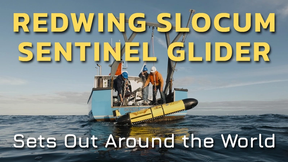
 August 2025
August 2025
